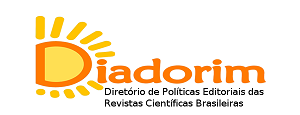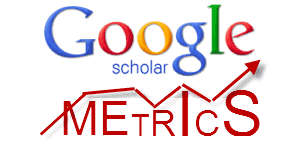PARQUES URBANOS
Forma, Função, Estrutura e Processo e suas potencialidades para o Ensino de Geografia
DOI:
https://doi.org/10.70860/rtg.v13i29.17084Schlagworte:
Parques Urbanos, Categorias de análise, Componentes físico-naturais e sociais, Ensino de GeografiaAbstract
O presente artigo surge do anseio de um estudo que tange às questões do Ensino de Geografia na Educação Básica levando em consideração as potencialidades geográficas de um parque urbano, com análise desses espaços através de sua forma, função, estrutura e seu processo, que, considerados em conjunto, constroem uma base teórica e metodológica a partir da qual é possível discutir os fenômenos espaciais em sua totalidade, como afirma Santos (1985). O artigo tem como objetivo apresentar reflexões sobre os parques urbanos enquanto um recorte territorial, além de argumentar sobre possibilidades de ensino de Geografia em parques urbanos, tendo esses locais grandes potencialidades geográficas para o processo de ensino e aprendizagem através da relação entre os componentes físico-naturais e sociais partindo da vivência dos educandos, podendo ser explorados (esses parques) a partir de linguagens, estratégias e técnicas (fotografias, vídeos, questionários iconográficos) que podem ser trabalhadas durante todo o processo educativo da proposta teórico-metodológica trabalho de campo, por exemplo. Consideram-se componentes físico-naturais todos os elementos compostos no espaço geográfico que em sua origem e seu desenvolvimento se formaram na natureza sem depender das relações sociais. Já os componentes sociais são concebidos como aqueles oriundos das relações sociais dos seres humanos que produzem e atuam cultural, econômica e politicamente.
Literaturhinweise
ARENDT, Hannah. A condição humana. Rio de Janeiro: Forense-Universitária; Rio de Janeiro: Salamandra; São Paulo: Ed. Universidade de São Paulo, 1981.
CORRÊA, Roberto Lobato. Processo, forma e significado: uma breve consideração. In: INSTITUTO HISTÓRICO E GEOGRÁFICO DO RIO GRANDE DO SUL, 2009. Disponível em: http://ihgrgs.org.br/artigos/contibuicoes/Roberto%20Lobato%20Corr%C3%AAa%20-%20Processo,%20Forma%20e%20Significado.pdf. Acesso em: 5 set. 2021.
GOMES, Marcos Antônio Silvestre. Os Parques e a Produção do Espaço Urbano. Jundiaí, SP: Paco Editorial, 2013.
GOMES, Paulo César da Costa. Espaço público, Espaços públicos. GEOgraphia, v. 20, n. 44, p. 115-119, 2018. Disponível em: https://doi.org/10.22409/GEOgraphia2018.v1i44.a27557. Acesso em: 9 jul. 2021. DOI: https://doi.org/10.22409/GEOgraphia2018.v1i44.a27557
HABERMAS, Jürgen. Mudança estrutural da esfera pública: investigações quanto a uma categoria da sociedade burguesa. Rio de Janeiro: Tempo Brasileiro, 1984.
KLIASS, Rosa Grena. Parques urbanos de São Paulo e sua evolução na cidade. São Paulo: Pini, 1993.
LIMA, Ana Maria Liner Pereira; CAVALHEIRO, Felisberto; NUSSI, João Carlos; SOUSA, Maria Alice de Lourdes Bueno; FIALHO, Nilva de Oliveira; PICCHIA, Paulo Celso Dornelles Del. Problemas de utilização na conceituação de termos como espaços livres, áreas verdes e correlatos. In: Encontro Nacional sobre Arborização Urbana, 5., 1994, São Luís. Anais..., 1995. p. 539-553.
MACEDO, Sílvio Soares; SAKATA, Francine Gramacho. Parques Urbanos no Brasil. São Paulo: Editora da Universidade de São Paulo, 2003.
SAKATA, Francine Gramacho. Parques Urbanos no Brasil - 2000 a 2017. 2018. 348p. Tese (Doutorado - Arquitetura e Urbanismo) - Universidade de São Paulo, 2018.
SANTOS, Milton. Estrutura, Processo, Função e Forma como Categorias do Método Geográfico. In: SANTOS, Milton. Espaço e Método. São Paulo: Nobel, 1985.
SANTOS, Milton. Espaço e Método. 3. ed. São Paulo: Livros Studio Nobel, 1992. 88p.
SANTOS, Milton. A natureza do espaço. Técnica e tempo. Razão e emoção. São Paulo: Hucitec, 2002. 259p.
SERPA, Ângelo. O Espaço Público na Cidade Contemporânea. São Paulo: Editora Contexto, 2007.
STRAFORINI, Rafael. A Totalidade-mundo nas primeiras séries do Ensino Fundamental: um desafio a ser enfrentado. Terra Livre, [S. l.], v. 1, n. 18, 2015. Disponível em: https://publicacoes.agb.org.br/terralivre/article/view/203. Acesso em: 6 jun. 2023. DOI: https://doi.org/10.62516/terra_livre.2002.203
Downloads
Veröffentlicht
Zitationsvorschlag
Ausgabe
Rubrik
Lizenz
Copyright (c) 2023 Tocantinense Journal of Geography

Dieses Werk steht unter der Lizenz Creative Commons Namensnennung - Nicht-kommerziell - Keine Bearbeitungen 4.0 International.
Revista Tocantinense de Geografia vergütet keinen Autor für die Veröffentlichung seiner Texte. Der Inhalt der in dieser Zeitschrift veröffentlichten Texte liegt in der Verantwortung der Autoren.








.png)












